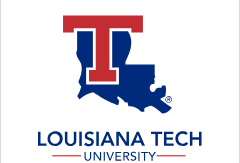Date of Award
Spring 2015
Document Type
Dissertation
Degree Name
Doctor of Business Administration (DBA)
Department
Economics and Finance
First Advisor
Jungshik Hur
Abstract
Ang, Hodrick, Xing and Zhang (2006) document an anomaly in the cross-section of stock returns. They show that high idiosyncratic volatility (IVOL) firms earn lower returns in the following month. Specifically, they find after sorting stocks in quintile portfolios based on the previous month's IVOL that a zero-investment portfolio long the most volatile quintile of stocks and short the least yields about -1% during the subsequent month. The evidence reported in Ang, Hodrick, Xing and Zhang (2006) is primarily puzzling because traditional asset pricing theories suggest that (i) only systematic risk should be priced, (ii) to the extent that markets are complete, frictionless with well diversified investors, idiosyncratic volatility should not matter, and (iii) for incomplete markets with under-diversified investors, idiosyncratic volatility should be positively priced (See Merton (1987)).
In my dissertation, I test the implications of both the anchoring bias and investor sentiments for the idiosyncratic volatility puzzle. I posit that subjecting market participants to such behavioral biases can go a long way in helping us understand this puzzling volatility-return relationship for which the recent empirical evidence is mixed. I consider in this study the possibility that investors are affected by anchoring bias. Employing George and Hwang (2004) measure of Nearness to 52-week high, I form and investigate the two primary hypotheses.
If market participants do anchor on the 52-week high and stocks for which bad news recently reached the market are overpriced (as shown by George and Hwang (2004)) and idiosyncratic volatility is seen as a proxy for uncertainty (Johnson (2004)), short-sale constraints (Nagel (2005) and George and Hwang (2011)) or arbitrage risk (Ali, Hwang and Trombley (2003), then I should expect the negative relationship between idiosyncratic volatility and stock returns to be stronger for stocks that are the farther away from their 52-week high price. Further, I note that Veronesi (1999) proposes a model of overreaction to bad news in good times. He argues and shows that in good times, bad news signals increased uncertainty and greater likelihood negative future performance, both of which lower stock prices and lead to negative returns. I therefore hypothesize that the IVOL puzzle should be stronger when bad news reaches the market in good times.
I report robust empirical evidence consistent with my hypotheses using U.S data from 1965 to 2012. I first investigate the presence of the IVOL puzzle in my sample using a portfolio sorting approach. I find that the choice of data frequency to estimate idiosyncratic volatility, weighing scheme and breakpoints all play an important role in the relationship between IVOL and future returns. After investigating whether anchoring on the 52-week high can explain the IVOL puzzle, I find a strong and robust negative relationship between IVOL and future returns for stocks that are away from their 52-week high. In addition, I also find that my previous results persist up to six months following portfolio formation. I also document that there exist, for stocks that are far from their 52-week high, an even stronger negative volatility-return relationship in period where investors sentiments are at their highest. That is, the negative relationship between IVOL and future returns is even stronger when bad news reaches the market in good times.
The evidence I present appear to be consistent with the notion that investors are affected by anchoring bias, a behavior that contributes to the overpricing of stocks that move away from their 52-week high prices as shown by George and Hwang (2004). My results are further consistent with the views in the finance literature suggesting that idiosyncratic volatility could serve as a proxy for uncertainty (See Johnson (2004)), short-sale constraints (See Nagel (2005) and George and Hwang (2011)) or arbitrage risk (See Ali, Hwang and Trombley (2003)). Moreover, I find that all my results are even stronger with the arrival of bad news in good times; a piece of evidence consistent with the proposition of Veronesi (1999). Finally, all these results cannot be explained by other known risk factors, momentum, book-to-market, as well as the January effect.
Recommended Citation
Mbanga, Cedric Tresor Luma, "" (2015). Dissertation. 226.
https://digitalcommons.latech.edu/dissertations/226
Included in
Business Administration, Management, and Operations Commons, Finance Commons, Finance and Financial Management Commons

